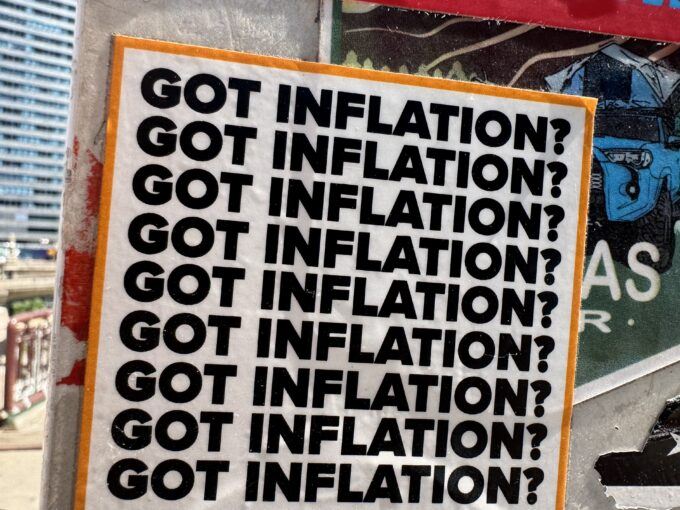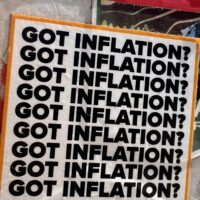


































































Photograph by Nathaniel St. Clair
In 2024, Donald Trump repeatedly promised that “a vote for Trump means your groceries will be cheaper.” He vowed that prices “will come down fast, with everything” starting “on Day One.”
Unfortunately, prices are moving in the other direction. In fact, grocery prices have reached record highs as foods like ground beef (up 13 percent), oranges (15 percent), and bananas (9 percent) have all gotten more expensive.
In fairness, eggs are down a little, and bread is 2 percent cheaper. If all you eat are egg salad sandwiches, you’ll do OK. (But hold the mayo — that’s gotten more expensive.)
Beyond groceries, electricity prices have risen 7 percent since Trump took office. And natural gas and gasoline are up 6 percent.
All told, inflation is surging — and soon could get worse. To start, deporting millions of law-abiding, hard-working immigrants can only drive up prices.
Undocumented immigrants are half of the agricultural workforce. Trump’s own Labor Department admits that deportations have brought on “acute labor shortages” that pose “immediate dangers to the American food supply.” There is now a “risk of supply shock-induced food shortages” and “higher prices.”
“If 70 percent of your workforce doesn’t show up, 70 percent of your crop doesn’t get picked and can go bad in one day,” a California grower explained to Reuters. The outcome: “price hikes for consumers.”
Undocumented immigrants are also a major part of the workforce in construction, meat-packing, food processing, hospitality, and transportation. Eliminating immigrant labor means more shortages and higher prices for all of these things.
President Trump’s “beautiful tariffs” make things still worse.
A tariff is an extra sales tax on the cost of everything purchased from overseas — shoes made in Vietnam, shirts and pants from Bangladesh, smartphones and toys from China, aluminum and lumber from Canada, auto parts from Mexico, coffee from Brazil, bananas from Guatemala, and so on.
The business that buys these goods pays the tariff and adds the tax to their price. If it is Canadian lumber that bears a 25 percent tariff, the 25 percent — as the National Association of Home Builders has pointed out — is a cost for builders that makes houses less affordable for buyers.
If it is tomatoes from Mexico with a 17 percent tariff, Safeway will charge you more.
“Overall, Americans now face an average tariff rate of 17.4 percent, reports CNBC, which is “estimated to cost households an extra $2,300 in 2025.”
Trump believes increasing the cost of imports will make U.S. manufacturing cheaper by comparison. But under a tariff economy, everything actually becomes more expensive, not less. For example, the cost of American cars will rise because cars include tariff-burdened imported steel, aluminum, and parts made abroad.
In theory, clothing manufacturing could be returned to the United States from poor countries like Bangladesh, Vietnam, and Ethiopia, where workers earn pennies an hour. But at U.S. wages, a woman’s shirt could cost $126 to $207 and a pair of jeans could run $234 to $324, Marketplace calculates.
Some tariffs are even more absurd. Coffee doesn’t grow in the U.S., so making coffee 20 percent more expensive unsurprisingly failed to create U.S. coffee plantations and jobs.
Trump was recently forced to backtrack, lifting tariffs on coffee, tea, bananas, and a limited number of other foods that are largely produced overseas. But the fact that there were tariffs on these goods in the first place shows how pointless the tariff regime has been — and largely remains.
The limited rollback also confirms what everyone now knows from their own experience: that Trump was not telling the truth when he repeatedly claimed tariffs were “not going to be a cost to you, it’s going to be a cost to another country.”
American consumers will continue to pay the price — literally — unless we resist this tariff lunacy and immigration brutality.
The post Welcome Back, Inflation! appeared first on CounterPunch.org.
This post was originally published on CounterPunch.org.